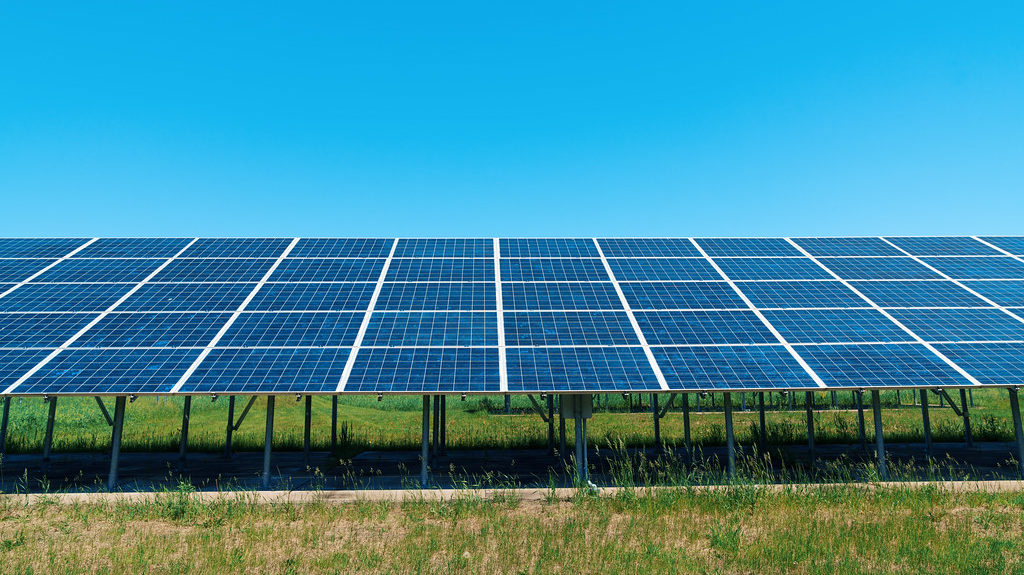How do solar panels work?
Solar panels turn sunlight into direct current electricity. These panels are paired with inverters that receive the electricity and process it so that it may join the electrical grid. The electricity then passes through a transformer to ensure that the power is the appropriate voltage before it is sent to the electric grid so that it may power homes and businesses.
What will Chestnut Solar do with the electricity generated?
The power produced from the solar project is injected directly into the electric grid. The power is then distributed to regional electric load centers such as co-operatives, municipalities, and commercial facilities.
How long will Chestnut Solar be in operation?
We expect Chestnut solar to produce electricity efficiently for more than 35 years.
What happens at the end of the project?
When the solar facility concludes operations, the system will be decommissioned and the equipment removed. Most material will be recycled and the land is restored to its natural condition. Solar does not require extensive boring underground, so its impacts on the land will be minimal.
Will the project make noise?
Solar panels do not produce noise, but the inverters that change the current of electricity do produce a slight hum, audible up to 50 feet away. This hum should not be perceptible beyond the property boundaries. Solar projects are quiet neighbors and will likely produce less noise than the current ambient noise on the property.
How tall are the solar panels?
Solar panels can range in height from 7-10 feet high.
Will the panels be visible for neighbors?
We will work hard to ensure that the project does not change the look or feel of the community. Solar arrays have a low profile and will be placed behind a setback and vegetative buffer to shield the project from the view of neighbors.
Will the panels affect wildlife?
Solar farms do not pose a threat to wildlife. Wildlife studies are an important part of the development process — trained experts study proposed sites to ensure that the development minimizes the impact on wildlife. Solar projects can also provide important habitats for birds and pollinators like bees and butterflies.
What benefits will Chestnut Solar produce for the community?
In most cases, solar projects are sited on agricultural land, which generates relatively little tax revenue. The change in use provides the area with a new, significantly higher tax revenue source. Additionally, solar projects utilize minimal public infrastructure (water, sewer, emergency services, etc.) relative to commercial or residential development therefore the cost to the community is a net positive. Utility-scale solar projects create local construction and operations jobs and increased business for local services providers. The solar projects also create a small number of long-term jobs for vegetation management and Operations and Maintenance of the facility.
In addition to the frequently asked questions above, Chestnut Solar is providing the below information based on feedback from the community received in the Public Information Meeting. These questions and answers are included in the application in Exhibit G, Appendix C. There you will also find a list of sections where each topic is addressed within the application. The full application including exhibits can be accessed on the OPSB Project Docket.
Will the project affect property values?
A property value study was commissioned specifically for this project and the results of the study show no correlation or impact on property values in the surrounding areas.
Will the project increase drainage issues?
Applicant has a design a maintenance plan for timely repair of any drain tiles that are damaged during construction that are not already addressed in the final civil engineering design. Applicant will engage a professional civil engineer licensed in Ohio to produce a civil design for the site as is required for all projects of this type. Consistent coordination with the Marion County Engineer and approval by the state agency will be completed.
Will there be any negative impacts on wildlife or habitat from the project?
Wildlife-permeable fencing will surround the site. The applicant has consulted with environmental scientists and coordinated with state and federal agencies to ensure there are no concerns.
How will the major gas transmission line under the site be affected?
The gas line will not be affected by the project. Appropriate coordination with the pipeline owner will occur and all required encroachment permits for crossing the area with a driveway will be secured.
How will the solar facility impact my view?
Applicant provides buffer visualizations to show the view from various locations across the site in
accordance with the landscape plan.
Could the site ever be returned to agricultural use?
Applicant created a detailed decommissioning plan which outlines the removal of the solar facility and the
return of the site to pre-construction conditions.
How will hazardous materials used to produce solar panels (cadmium, lead, sulfuric acid, nitric acid, acetone, and trichloroethane) be managed?
Solar panels will be operated and maintained in good working condition for optimal efficiency and to prevent
damaged panels. Damaged solar panels will be disposed of in accordance with federal, state and local guidelines.
